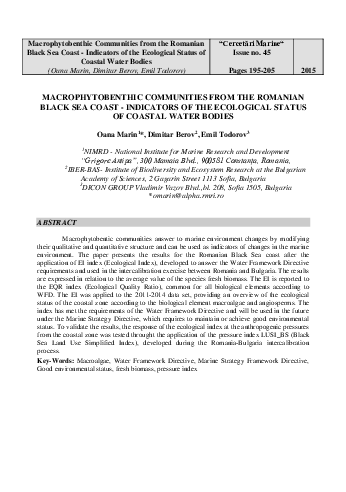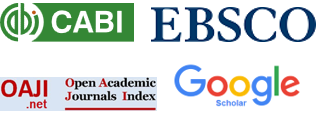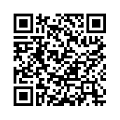Macrophytobenthic Communities from the Romanian Black Sea Coast - Indicators of the Ecological Status of Coastal Water Bodies
DOI:
https://doi.org/10.55268/CM.2015.45.195Keywords:
Macroalgae, Water Framework Directive, Marine Strategy Framework Directive, Good environmental status, fresh biomass, pressure indexAbstract
Macrophytobentic communities answer to marine environment changes by modifying their qualitative and quantitative structure and can be used as indicators of changes in the marine environment. The paper presents the results for the Romanian Black Sea coast after the application of EI index (Ecological Index), developed to answer the Water Framework Directive requirements and used in the intercalibration exercise between Romania and Bulgaria. The results are expressed in relation to the average value of the species fresh biomass. The EI is reported to the EQR index (Ecological Quality Ratio), common for all biological elements according to WFD. The EI was applied to the 2011-2014 data set, providing an overview of the ecological status of the coastal zone according to the biological element macroalgae and angiosperms. The index has met the requirements of the Water Framework Directive and will be used in the future under the Marine Strategy Directive, which requires to maintain or achieve good environmental status. To validate the results, the response of the ecological index at the anthropogenic pressures from the coastal zone was tested throught the application of the pressure index LUSI_BS (Black Sea Land Use Simplified Index), developed during the Romania-Bulgaria intercalibration process.
Downloads
Published
2015-12-03
How to Cite
Marin, O., Berov, D., & Todorov, E. (2015). Macrophytobenthic Communities from the Romanian
Black Sea Coast - Indicators of the Ecological Status of
Coastal Water Bodies. Cercetări Marine - Recherches Marines, 45(1), 195–205. https://doi.org/10.55268/CM.2015.45.195
Issue
Section
ORIGINAL ARTICLES
License
This is an open access journal, which means that all content is freely available without charge to the user or his/her institution. Users are allowed to read, download, copy, distribute, print, search, or link to the full texts of the articles, or use them for any other lawful purpose, without asking prior permission from the publisher or the author. This is in accordance with the BOAI definition of open access.






